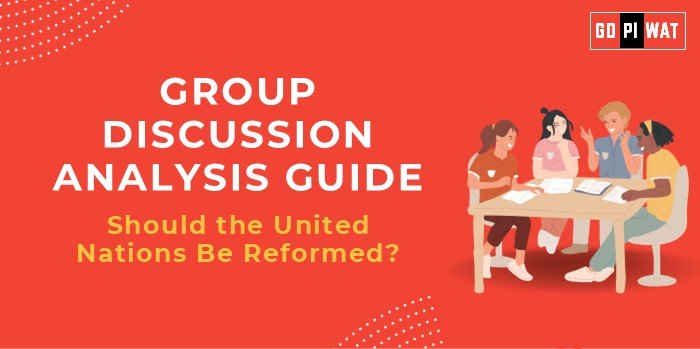📋 Should the United Nations Be Reformed?
🌐 Introduction to the Topic
- 💡 Opening Context: The United Nations (UN), established in 1945, has been pivotal in fostering global peace and development. However, recent geopolitical dynamics, climate crises, and economic disparities highlight the growing need for structural and functional reforms.
- 🌍 Topic Background: Designed post-World War II, the UN’s framework primarily reflects the power dynamics of the 20th century. Issues such as limited representation in the Security Council and inefficiencies in decision-making have sparked calls for reform.
📊 Quick Facts and Key Statistics
- ⚖️ Security Council Composition: 5 permanent members (P5) and 10 non-permanent members. Critics argue this no longer reflects global realities.
- 🌍 Membership: 193 countries, representing almost all sovereign nations.
- 💰 Global Budget: $3.2 billion for 2024 (UNGA Report) – often cited as insufficient for its mandate.
- 👮♂️ Peacekeeping Operations: Active in 12 regions with over 87,000 personnel deployed globally.
- 🌍 Inequity in Representation: Africa and Latin America lack permanent representation in the Security Council.
👥 Stakeholders and Their Roles
- 🏛️ Member States: Advocate for or resist reforms based on their geopolitical influence.
- ⚖️ UN Bodies: Agencies like the General Assembly and Security Council drive reforms internally.
- 🤝 Civil Society Organizations: Push for accountability and inclusivity.
- 🌐 Global Superpowers (P5): Control significant decision-making power, often resisting changes that dilute their influence.
🏆 Achievements and ⚠️ Challenges
Achievements
- ✌️ Global Peacekeeping: Reduced conflicts in regions like Sierra Leone and Kosovo.
- 🌱 Sustainable Development Goals (SDGs): Mobilized global efforts towards poverty reduction and climate action.
- 💉 Health Interventions: Spearheaded eradication campaigns for diseases like smallpox.
Challenges
- ⚖️ Structural Imbalance: The veto power of the P5 often results in policy deadlock.
- ⏳ Operational Inefficiencies: Critics highlight bureaucratic delays in crisis response.
- 💰 Funding Shortfalls: Dependence on member contributions affects operational sustainability.
🌏 Global Comparisons
- 📜 League of Nations (Predecessor): Failed due to lack of inclusivity and enforcement mechanisms.
- 🇪🇺 European Union: A regional model emphasizing shared sovereignty, often viewed as more equitable.
📖 Case Study
Syria Crisis (2011–Present): The UN Security Council failed to act decisively due to P5 disagreements, showcasing reform needs.
💬 Structured Arguments for Discussion
- Supporting Stance: “Reforms are essential to make the UN more representative and effective in addressing 21st-century challenges.”
- Opposing Stance: “Reforms risk destabilizing the balance of power that has maintained relative peace since 1945.”
- Balanced Perspective: “While reforms are necessary, they should be gradual to preserve the UN’s foundational stability.”
🛠️ Effective Discussion Approaches
Opening Approaches
- 📊 Statistical Impact: “With 87,000 peacekeepers in operation, why does the UN struggle with timely interventions?”
- ⚖️ Contrast Approach: “While the UN promotes equality, the P5’s veto power starkly contrasts this ideal.”
Counter-Argument Handling
- 💡 Highlight successful reforms (e.g., Human Rights Council revamp).
- 📈 Use data to show the disparity in representation.
- 🤝 Acknowledge the risks of destabilization but emphasize phased changes.
📌 Strategic Analysis of Strengths and Weaknesses
Strengths
- 🌐 Global legitimacy and established mechanisms.
- ✌️ Proven peacekeeping record in conflict zones.
Weaknesses
- 📜 Outdated structure reflecting 20th-century power dynamics.
- 💰 Dependency on member state funding.
Opportunities
- 🌟 Incorporating emerging powers to better reflect global realities.
- 💻 Leveraging digital diplomacy for more efficient operations.
Threats
- 🚫 Resistance from superpowers to maintain the status quo.
- ⚔️ Geopolitical rivalries undermining reform efforts.
🎓 Connecting with B-School Applications
- Real-World Applications:
- 📚 Topics on governance reform or global diplomacy in operations and strategy courses.
- Sample Interview Questions:
- 🤔 “How should the UN address its operational inefficiencies?”
- 📘 “What lessons can the UN take from regional organizations like the EU?”
- Insights for B-School Students:
- 🤝 Develop negotiation strategies by analyzing power dynamics.
- 🌍 Research multilateralism for international business contexts.
- 📈 Explore how governance reforms can lead to organizational efficiency.


